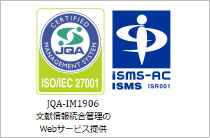ホームIMICライブラリMMWR抄訳2022年(Vol.71)公開されているメディケアパートDデータを用いた外来・・・
2022/02/11Vol. 71 / No. 6
MMWR71(6):202-205
Identifying Higher-Volume Antibiotic Outpatient Prescribers Using Publicly Available Medicare Part D Data — United States, 2019
公開されているメディケアパートDデータを用いた外来患者への抗生物質の処方箋量が多い医師の特定 ― アメリカ、2019年
抗生物質の処方は薬物有害事象や公衆衛生上の脅威をもたらす抗生物質耐性を引き起こす可能性がある。65歳以上の高齢者では外来での抗生物質処方率が高く、クロストリジウムディフィシル感染症、抗生物質耐性感染症、それに関連する死亡などの抗生物質関連有害事象のリスクが増加する。抗生物質処方の質に関するばらつきは患者の基礎疾患や診断とは関係なく、主に医師個人の処方パターンによるものである。今回、Centers for Medicare & Medicaid Services(CMS)のPart D Prescriber Public Use Filesの2019年データを分析し、外来における抗生物質処方量が多い医師(処方量が多い上位10%)と処方量が少ない医師(処方量下位90%)による処方を比較した。データのうち、抗生物質処方が11回未満の医師、アメリカ領や海外軍事基地の医師を除いた697,065名の医師による処方を今回の分析対象とした。計5,940万件の抗生物質処方のうち、41%(2,440万件)は抗生物質処方量が多い医師(69,835名)によるものであり、これらの医師の処方数中央値は284件、処方数の少ない医師による処方数中央値は41件であった。また、処方数の多い医師は患者の38%、少ない医師は32%(いずれも中央値)に抗生物質を処方しており、メディケア受給者1,000人あたりの処方数は処方数の多い医師(680件)が処方数の少ない医師(426件)より60%多かった。処方数の多い医師の約半数(33,571名、48%)は南部にて開業しており、この地域における総抗生物質処方の49%(約1,230万件)を処方していた。また、メディケア受給者1,000人あたりの処方数は南部にて696件と、他の地域に比べて高かった(中西部681件、北東部655件、西部649件)。処方数の多い医師が最もおおい専門領域は家庭医(19,213/89,759名、21%)および内科医(17,185/85,442名、20%)であり、各専門領域で処方された抗生物質の約60%を占めた。泌尿器科医による処方は総処方数の1%であったが、約半数(4,738/9,425名)が処方数の多い医師であり、泌尿器科における抗生物質処方量の約83%に相当する200万件が処方された。また、メディケア受給者1,000人あたりの処方数は歯科医がもっとも多かった(1,271件)。公衆衛生当局と医療システムにとって、抗生物質耐性発現を抑制し、患者の転帰を改善するための抗生物質管理介入の指南と抗生物質処方の適正化のためにCMSのPart D Prescriberのデータは使用できる。
References
- CDC. Antibiotic resistance threats in the United States, 2019. Atlanta, GA: US Department of Health and Human Services, CDC; 2019. <https://www.cdc.gov/drugresistance/pdf/threats-report/2019-ar-threats-report-508.pdf>
- Jones BE, Sauer B, Jones MM, et al. Variation in outpatient antibiotic prescribing for acute respiratory infections in the veteran population: a cross-sectional study. Ann Intern Med 2015;163:73–80. PMID:26192562 <https://doi.org/10.7326/M14-1933>
- King LM, Fleming-Dutra KE, Hicks LA. Advances in optimizing the prescription of antibiotics in outpatient settings. BMJ 2018;363:k3047. PMID:30420401 <https://doi.org/10.1136/bmj.k3047>
- Schwartz KL, Ivers N, Langford BJ, et al. Effect of antibiotic-prescribing feedback to high-volume primary care physicians on number of antibiotic prescriptions: a randomized clinical trial. JAMA Intern Med 2021;181:1165–73. PMID:34228086 <https://doi.org/10.1001/jamainternmed.2021.2790>
- Hallsworth M, Chadborn T, Sallis A, et al. Provision of social norm feedback to high prescribers of antibiotics in general practice: a pragmatic national randomised controlled trial. Lancet 2016;387:1743–52. PMID:26898856 <https://doi.org/10.1016/S0140-6736(16)00215-4>
- Staub MB, Ouedraogo Y, Evans CD, et al. Analysis of a high-prescribing state’s 2016 outpatient antibiotic prescriptions: implications for outpatient antimicrobial stewardship interventions. Infect Control Hosp Epidemiol 2020;41:135–42. PMID:31755401 <https://doi.org/10.1017/ice.2019.315>
- Kitano T, Langford BJ, Brown KA, et al. The association between high and unnecessary antibiotic prescribing: a cohort study using family physician electronic medical records. Clin Infect Dis 2021;72:e345–51. PMID:32785696 <https://doi.org/10.1093/cid/ciaa1139>
- Hicks LA, Bartoces MG, Roberts RM, et al. US outpatient antibiotic prescribing variation according to geography, patient population, and provider specialty in 2011. Clin Infect Dis 2015;60:1308–16. PMID:25747410 <https://doi.org/10.1093/cid/civ076>
- Kabbani S, Palms D, Bartoces M, Stone N, Hicks LA. Outpatient antibiotic prescribing for older adults in the United States: 2011 to 2014. J Am Geriatr Soc 2018;66:1998–2002. PMID:30221746 <https://doi.org/10.1111/jgs.15518>
- Zhang Y, Steinman MA, Kaplan CM. Geographic variation in outpatient antibiotic prescribing among older adults. Arch Intern Med 2012;172:1465–71. PMID:23007171 <https://doi.org/10.1001/archinternmed.2012.3717>
Copyright © 2013 International Medical Information Center. All Rights Reserved.












